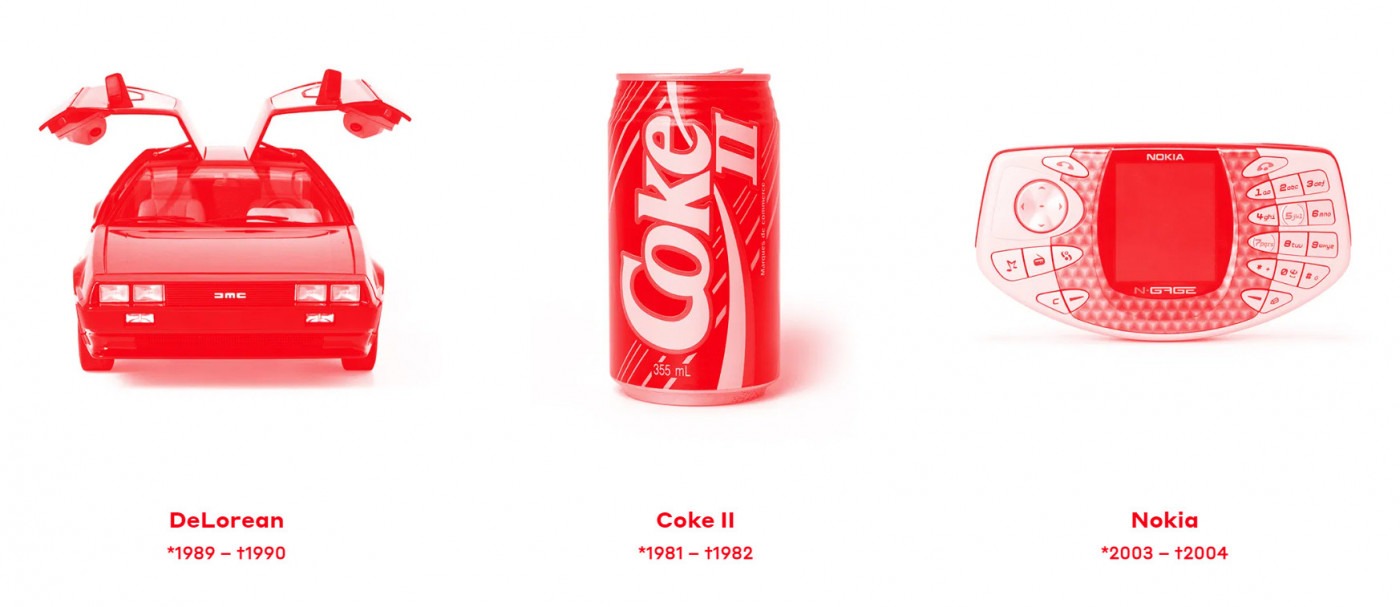Inside the museum of failure
Do you remember Coke II? How about Heinz EZ Squirt Ketchup, or the Nintendo Power Glove? For once, it’s not me showing my age – these are products that released and, for many reasons, failed. More recent examples include the Bic for Her pen, and the Google Glass glasses, which sit alongside the DeLorean car in the new Museum of Failure. In Brooklyn’s Industry City complex, this brand-new gallery has opened, dedicated to retail objects that have bombed commercially – but what is the appeal of visiting an exhibition concerned solely with things that have failed?
According to its website, the Museum of Failure collects “failed products and services from around the world”, offering what it terms a fascination learning experience” into failed innovation through a showcase of around 160 items. It goes on to say: “Every item provides unique insight into the risky business of innovation. The museum aims to stimulate productive discussion about failure and inspire us to take meaningful risks.” Whether or not that assessment holds true for every item is a matter of opinion – the Bic for Her failed because it was a colourful pen with a bit of glitter, in what felt destined to go wrong – but the museum aims to challenge our conceptions of flops and failure.
The exhibit was curated by Dr Samuel West, who holds a PhD in organisational psychology and is a licensed psychologist. He believes that the biggest obstacle to innovation is the fear of failure, and this idea served as the inspiration for the exhibition. He said: “The whole aim of the museum is to help people recognise that we need to accept failure if we want progress. And by that, I mean any kind of progress, not just consumer products and new devices. The main point is that we have to accept failure, because it usually takes several iterations before we get things right – most experiments fail.
“And then the second point – which I try to make money off of, with varying degrees of success – is to emphasise that companies in particular have to be better at learning from their failures. A corollary is that it is not cool just to ‘fail fast’, as they like to say in Silicon Valley. Or to ‘move fast and break things’, or any of those clichés. Yes, it’s okay to fail, but you have to learn something from the experience.”
Since the museum was first founded in Sweden in 2017, West has compiled failures and stories of failures, but often uses the exhibit to connect the flops with stories of how they inspired success. Coke II (also known as New Coke) was an attempt by the company to change the formula – this led to a massive backlash, and eventually led to the original Coke coming back as Coca-Cola classic. The Nintendo Power Glove flopped when it was released in 1989 because it was nigh-on unworkable, but its ideas were eventually realised in the Nintendo Wii. The message is clear – sometimes failure has to happen to figure out the success.
The message is clear – sometimes failure has to happen to figure out the success
In an interview, West was asked to name his favourite failure in the museum. He said: “I really can’t say which one I like most because it changes all the time. But now I’m kind of into ones that have weird backgrounds to them, like the Amstrad Emailer. It looks like a combination of computer, fax, and landline phone that you could use to send emails. And you had to pay per email. The only reason it exists is because it was the vision of the founder of the company, an eccentric British lord and respected British businessman, and he kept it alive.
“And like a lot of the things that have failed, the Amstrad Emailer failed because the founder did not listen to the people around him. We often have this vision of the maverick pioneer who goes his own way, doesn’t listen to anyone else, and becomes mega-successful. But the reality is, that’s very rare. Most times, if you don’t listen to the people around you – your customers, your staff, the employees, what have you – it’s probably going to go pretty bad.”
For West, the exhibit is a timely one: “I think that the idea of embracing failure has definitely met the zeitgeist. Had the Museum of Failure opened five years earlier, it probably wouldn’t have gotten that much attention. And I think that at some point, either people are going to get tired of the message from all these groups involved with failure and tell them to shut up – or we’ll actually get a fundamental change and decrease the stigma of taking meaningful risks and failing.”

Comments